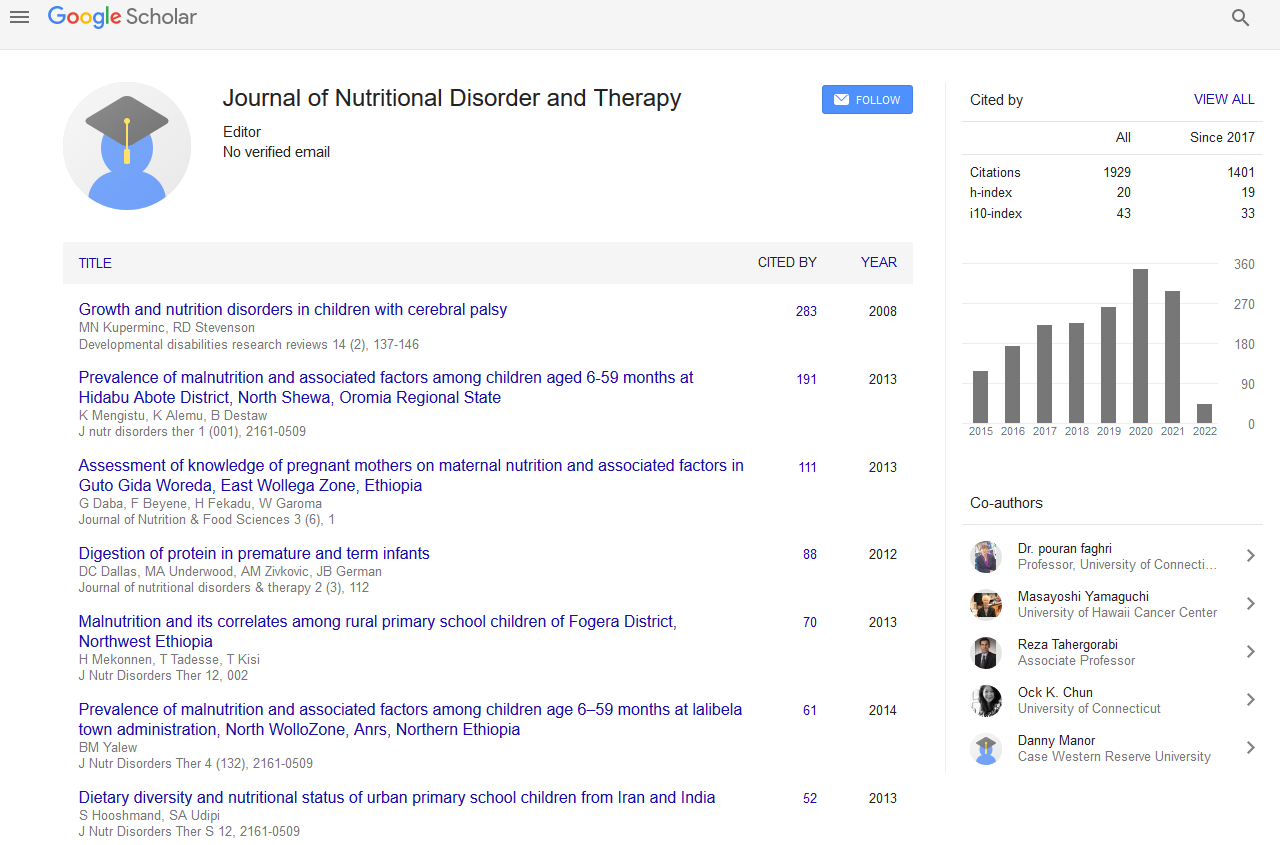Indexed In
- Open J Gate
- Genamics JournalSeek
- Academic Keys
- JournalTOCs
- Ulrich's Periodicals Directory
- RefSeek
- Hamdard University
- EBSCO A-Z
- OCLC- WorldCat
- Publons
- Geneva Foundation for Medical Education and Research
- Euro Pub
Useful Links
Share This Page
Journal Flyer

Open Access Journals
- Agri and Aquaculture
- Biochemistry
- Bioinformatics & Systems Biology
- Business & Management
- Chemistry
- Clinical Sciences
- Engineering
- Food & Nutrition
- General Science
- Genetics & Molecular Biology
- Immunology & Microbiology
- Medical Sciences
- Neuroscience & Psychology
- Nursing & Health Care
- Pharmaceutical Sciences
Abstract
Different Measurements of Body Fatness and Cardiovascular Risk in Community Dwelling Old Adults
Olof G. Geirsdottir, Milan Chang, Palmi V. Jonsson, Inga Thorsdottir and Alfons Ramel
Body mass index (BMI) does not necessarily predict cardiovascular disease in old populations which has been called obesity paradox. The aims of the present study were to investigate 1) the associations between BMI and body fat in old adults, and 2) whether more sophisticated measures of body fat are stronger associated with cardiovascular risk than BMI.
In the current cross-sectional analysis, the participants‘(N=232, 65-92 years) body fatness was estimated using BMI, waist-circumference, DXA (fat mass, visceral fat mass) and cardiovascular risk factors (blood lipids, glucose metabolism, blood pressure) were assessed.
BMI correlated highly with fat mass measured by DXA independently from age tertiles and in both genders. In general, body fatness was positively related to several cardiovascular risk factors and this was persistently observed for all the different measures of body fatness. However, fat measures were not associated with total cholesterol or LDL. Sensitivity analysis indicated that BMI ≥ 25 identifies 70-100% of participants with the above mentioned cardiovascular risk factors outside normal range.
We conclude in BMI is highly correlated with body fatness in old Icelandic adults. DXA measurement of body fatness is not better in estimating cardiovascular risk in old adults compared to simple BMI.


